Lions and tigers and ... glowing roaches? Oh my.

22 Animal Species So Gross, They’ll Make Your Skin Crawl

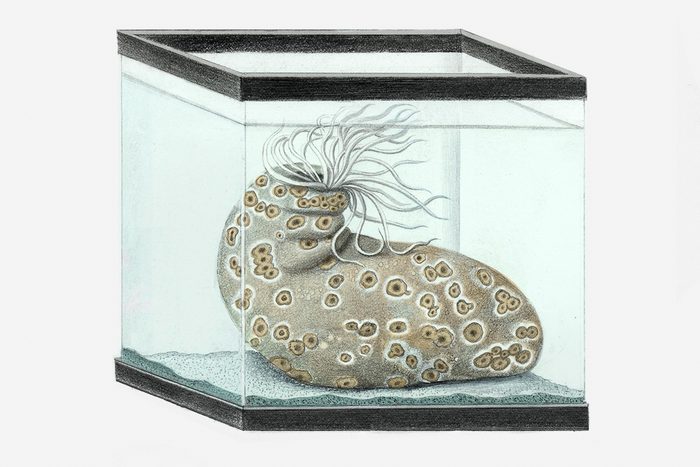
Sea cucumber
The sea cucumber’s sloth-like speed should makeit easy prey, but this unappealing bottom-feeder possesses a secret weapon. When under threat by, say, a crab, some sea cucumber species shoot out their guts—their intestines and respiratory tracts, and even their reproductive organs!—from their anuses. Believe it or not, certain predators find this appetizing. As they dig in, the sea cucumber hides under a rock or in the sand and plots its escape. Going on with life after you’ve literally spilled your guts isn’t easy, and afterward, the sea cucumber finds itself in a kind of suspended animation for a few months, regenerating its organs and getting ready to escape the next unsuspecting crab.
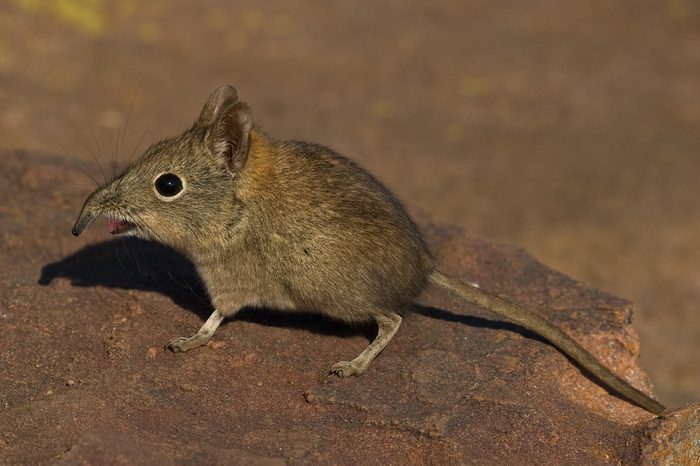
Elephant shrew
Although they may look like everyday mice (albeit not as cute), elephant shrews aren’t technically rodents. The tiny mammal genetically resembles its jumbo namesake, the elephant, way more than a mouse, according to the African Wildlife Foundation. And it uses its unappealing long snout to sweep the ground in search of its next meal—ants and other insects. Yum!
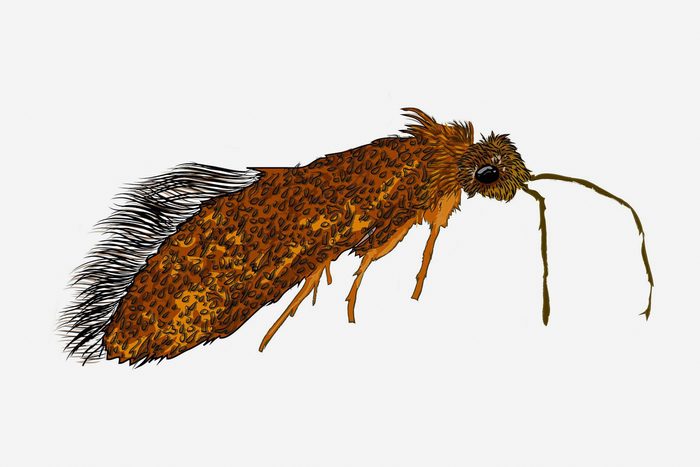
Enigma moth
Only recently discovered, this new species of moth is particularly unique because it lives for only one day. Within 24 hours, they emerge from their cocoon, mate, reproduce and then die. What’s so mysterious about it? It’s missing a proboscis—the mouthpart most moths and butterflies have that helps them suck nectar from a flower—and scientists are unsure if the enigma moth takes liquid in some other way or if the adults just don’t eat at all.
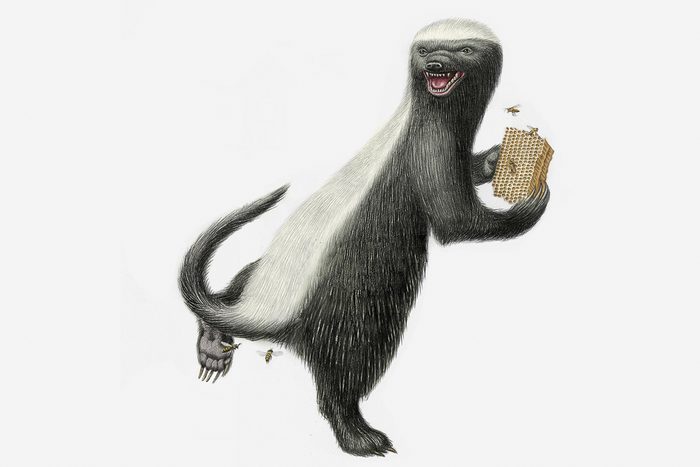
Honey badger
The 30-pound honey badger has been dubbed the most fearless animal in the world for its willingness to take on larger beasts, such as lions and buffalo. Aside from an incredibly powerful jaw and a thick, rubbery skin, the honey badger defends itself by turning the pouch in its rear end inside out to spray enemies with a musky, suffocating stench. This action sends predators fleeing, whichis exactly what you would do if someone you just met pulled the same stunt. Here’s another factoid: The honey badger usually lives alone. Gee, wonder why?

Zombie fungus
If you watched The Last of Us and worried if that zombie fungus that takes over humans was real, you’ll be happy that the answer is no—but it was based on this terrifying fungus that affects ants. The Brazilian species is a parasite that makes its home in an ant’s brain, controls the ant until it kills it off, then takes its spores elsewhere.
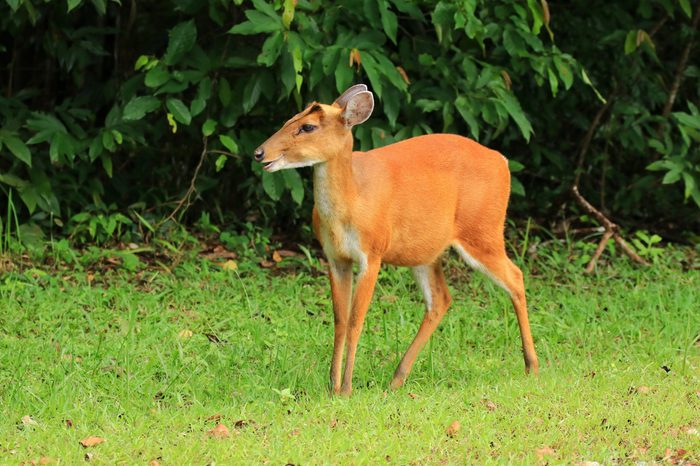
Leaf deer
Smaller than a standard beagle, the average adult leaf deer weighs about 25 pounds and measures about 8 inches tall. Its name came about because Myanmar locals claim it is so small that it can be wrapped in just one large leaf. And while some might think this tiny mammal is cute, others find it disturbingly creepy. Beauty really is in the eye of the beholder.
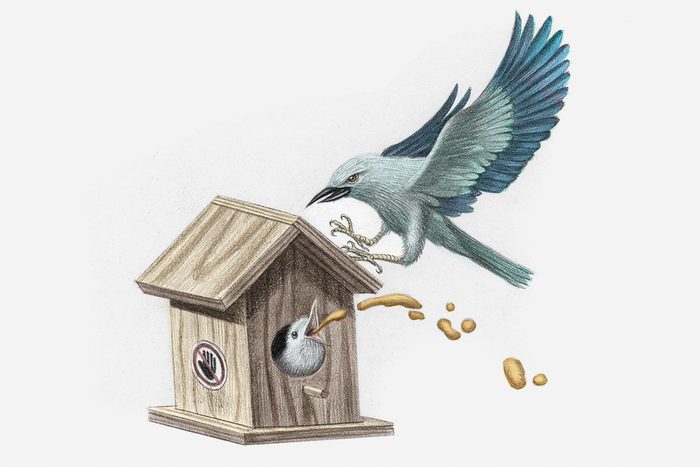
Eurasian roller bird
How’s this for a greeting? You approach a friend to say hi, and they open their mouths and vomit on you. That’s exactly what young Eurasian roller birds do to protect themselves from would-be predators. When the young birds hurl their orange, putrid-smelling intestinal fluid, it keeps the bad guys at bay and alerts their parents to potential trouble.
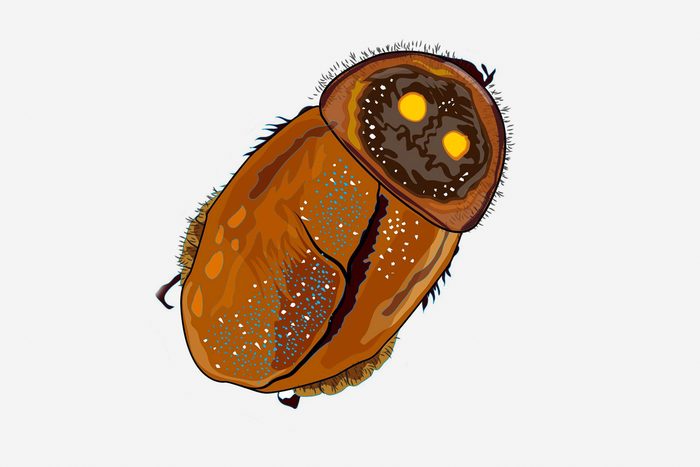
Glowing cockroach
There’s no such thing as a cute cockroach, but this species of cockroach that uses bacteria to glow in the dark may be the creepiest looking cockroach ever. We have to admit, though, it’s pretty smart. It uses its bioluminescence to trick predators into thinking it’s a distasteful click beetle, so it can scurry around unharmed (at least until it meets a terrified human with a shoe).

Bombardier beetle
This creature gets its name honestly: It fends off attackers by bombing them with chemicals hot enough to burn human skin. The flying half-inch beetlehas two separate glands. One contains hydrogen peroxide and hydroquinone, which also can be engineered in a lab and used commercially as a skin-bleaching agent. The other harbors a mixture of enzymes. When the contents of the two glands are mixed, they create a chemical that can reach a temperature of 212 degrees Fahrenheit. This combination is then shot out from a remarkably accurate nozzle-like opening located on the rear of the beetle’s abdomen, an action it can repeat up to 20 times in a row before running out of ammunition.
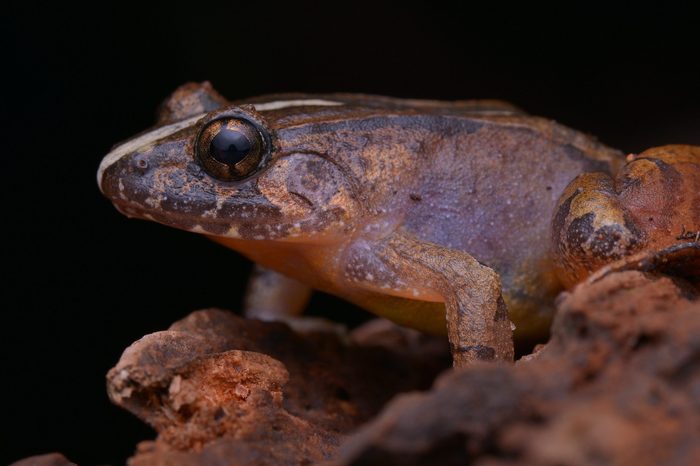
Fanged frogs
As if being a slimy amphibian wasn’t gross enough, the Limnonectes larvaepartus is a frog with fangs. It has two projections on its lower jaw that make great defensive weapons. The species gives birth to live tadpoles, then uses its fangs to fight off predators.

Massive eel
What’s worse than a regular-size eel? A giant one, and this eel is the largest of its kind. Its scientific name is Pylorobranchus hearstorum, or worm eel, and it was first discovered in 2014. It measures 50 inches long from head to tail, which is about twice as long as every other type of eelworm.
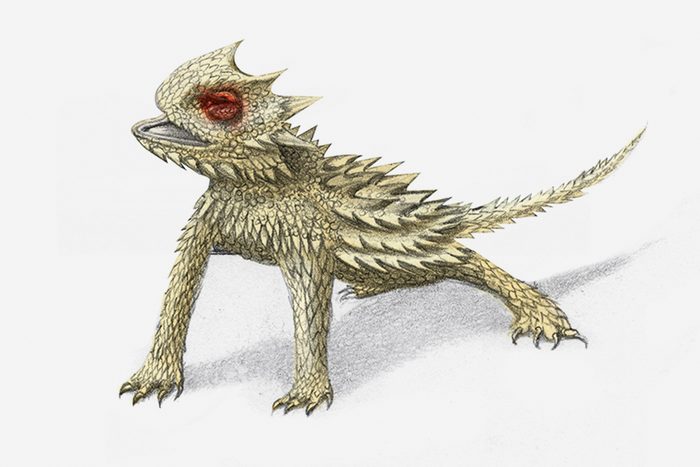
Horned lizard
The horned lizard, found wandering drier climates from Arizona to Guatemala, would be a tasty meal for hawks, snakes, canines and other hunters, but predators beware.It shoots blood from ducts in the corners of its eyes into the face of stunned predators, allowing the lizard to make a hasty retreat. The blood can travel up to four feet and is thought to contain a substance that’s unpleasant for dogs and coyotes.

Carnivorous sponge
These sponges may look harmless, but they use their hooked appendages to grab passing sea creatures, enclose them in a thin membrane (think spider’s web), then devour them. So you might want to double-check your loofah—as this is one animal species that’s smarter than you might think.

Hairy frog
If you learned of a frog that was constantly breaking its own bones, you’d probably think: Wow, that’s one careless amphibian. But the 4-inch hairy frog of western Africa knows what it’s doing. When threatened, it can contract muscles that are connected to its hind claws, breaking the bones. The frog then thrusts the shards through the underside of its toe pads, turning them into weapons. When the foe has been vanquished, the bones retreat back into the foot, where it’s believed the tissue around the bony claws eventually regenerates. X-Men comic book fans may recognize this move, which is why the frog is sometimes called theWolverine frog.
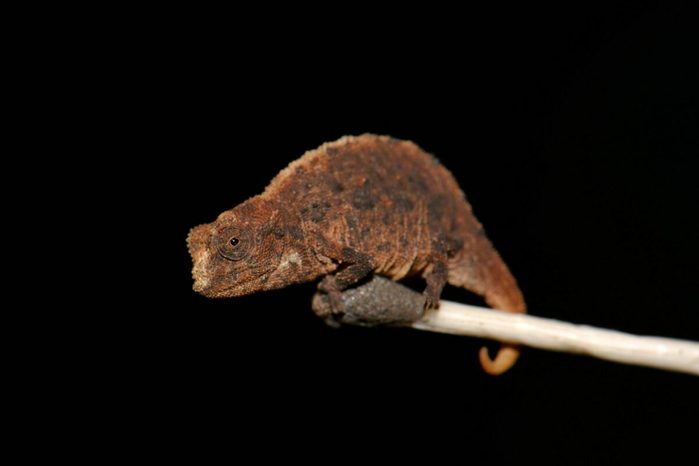
Tiniest chameleon
This tiny chameleon sub-species called a Brookesia marca is small enough to rest comfortably on the tip of a match. And while they’re pretty creepy looking, you aren’t likely to encounter one—the mini reptile is at risk of extinction due to deforestation and general habitat loss.
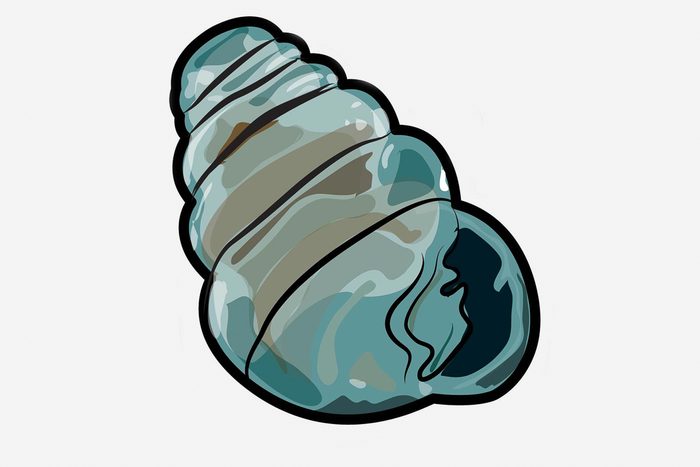
Transparent shell snail
Nearly 1,000 kilometers (about 609 miles) below sea level in a Croatian cave system, scientists discovered a creepy snail that has a translucent shell. Good luck trying to find one, though. Even if you could dive deep enough, the creatures are as tiny as they are rare. Though the cave was home to many types of snails, scientists recovered just one specimen of this species.
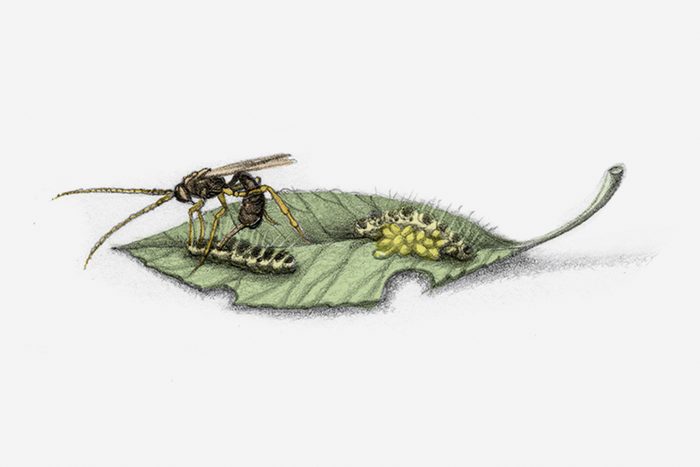
Xenomorph wasp
Remember the film Alien? The title character,Xenomorph, injects its embryo into the body of an astronaut. A few days later … BAM! A baby alien pops out of the poor guy’s chest. Well, about a year ago a researcher in Australia discovered a wasp that injects its eggs into its victim, such as a moth caterpillar. As the eggs grow, they consume the caterpillar’s insides until they burst out of its body as fully formed larvae. It doesn’t end there. Sometimes the caterpillar survives in a zombified state, doomed to live out its life protecting the new communal cocoon until the day the larvae emerge as wasps. The researcher, obviously a sci-fi fan, dubbed the wasp the Dolichogenidea xenomorph. Just think of it as one more sequel in theAlien canon.

Snub-nosed monkey
Is that a monkey … or Voldemort? Either way, you wouldn’t want to run into one of these in the darkest jungle—unless you’re a scientist trying to study them. These critically endangered snub-nosed monkeys from Myanmar tend to get water in their nose when it rains, so researchers locate them by their sneezes.

Skeleton shrimp
Tiny and rare, this skeletal-looking translucent shrimp has only been seen in caves off the coast of Southern California. Also known as the praying mantis of the sea and the ghost shrimp, this gross-looking invertebrate uses its powerful front legs to form claws for defense, capturing food—and creeping people out.
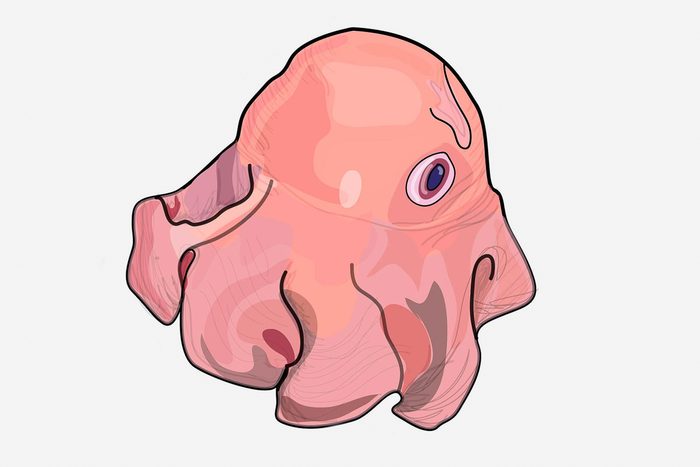
Flapjack octopus
While most octopi are graceful, glorious creatures, this tiny octopus propels its soft, gelatinous body through the water using its stubby fins. At only 7 inches long, it most closely resembles a lumpy pancake, hence the name.

Eyelash-winged wasp
Tinkerbella, aptly named after the pert fairy in Peter Pan, is a species of wasp known for its distinct wings, which resemble eyelashes. For such a delicate bug with a lovely name, one might think the wasp would be … prettier.
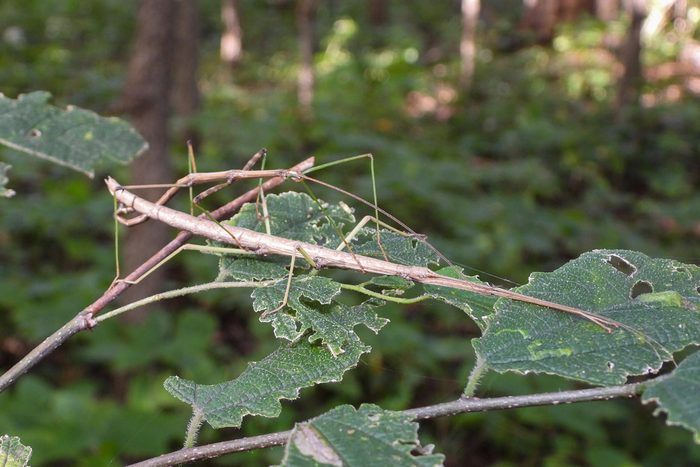
Stick bug
The stick bug is over a foot long, which makes it the second-biggest living insect ever found. While they may look as harmless as, well, a stick, when they feel threatened they secrete a foul-smelling chemical to ward off predators—and that’s just plain gross.
Why trust us
At Reader’s Digest, we’re committed to producing high-quality content by writers with expertise and experience in their field in consultation with relevant, qualified experts. We rely on reputable primary sources, including government and professional organizations and academic institutions as well as our writers’ personal experiences where appropriate. We verify all facts and data, back them with credible sourcing and revisit them over time to ensure they remain accurate and up to date. Read more about our team, our contributors and our editorial policies.
Additional reporting by Andy Simmons and Jane Claire Hervey.
Sources:
- African Wildlife Foundation: “Elephant Shrew, Wildlife Conservation”
- Australia Foundation for National Parks and Wildlife: “Have you seen an enigma moth?”
- The Atlantic: “How the Zombie Fungus Takes Over Ants’ Bodies to Control Their Minds”
- National Geographic: “Glowing Cockroach Mimics Toxic Beetle”
- Live Science: “12 Amazing Species Discovered in 2012”
- Subterranean Biology: “New Zospeum species (Gastropoda, Ellobioidea, Carychiidae) from 980 m depth in the Lukina Jama – Trojama cave systems”
- CNN: “Scientific institute lists its top 10 newly discovered species”
- Monterey Bay Aquarium: “Skeleton Shrimp”
- Science Daily: “Tinkerbella nana: A new representative from the world of fairyflies”




















